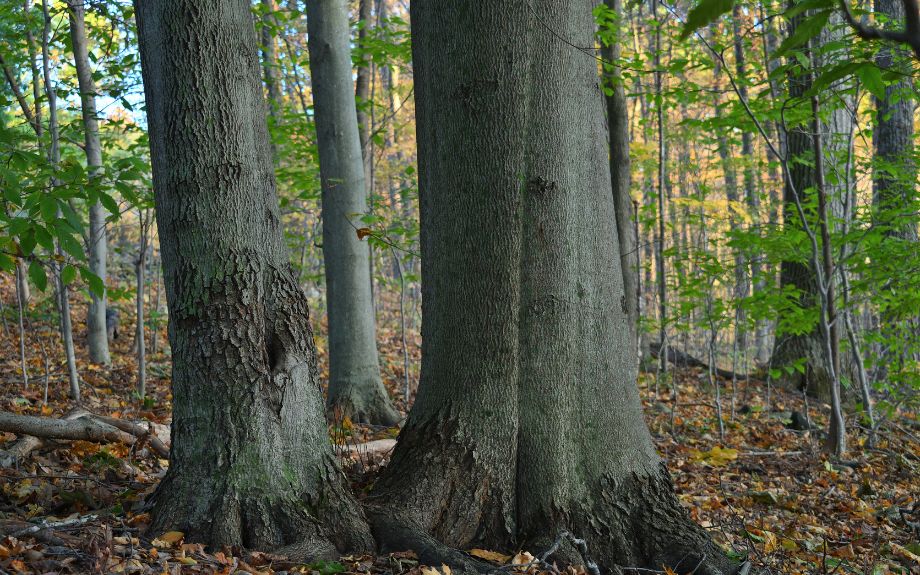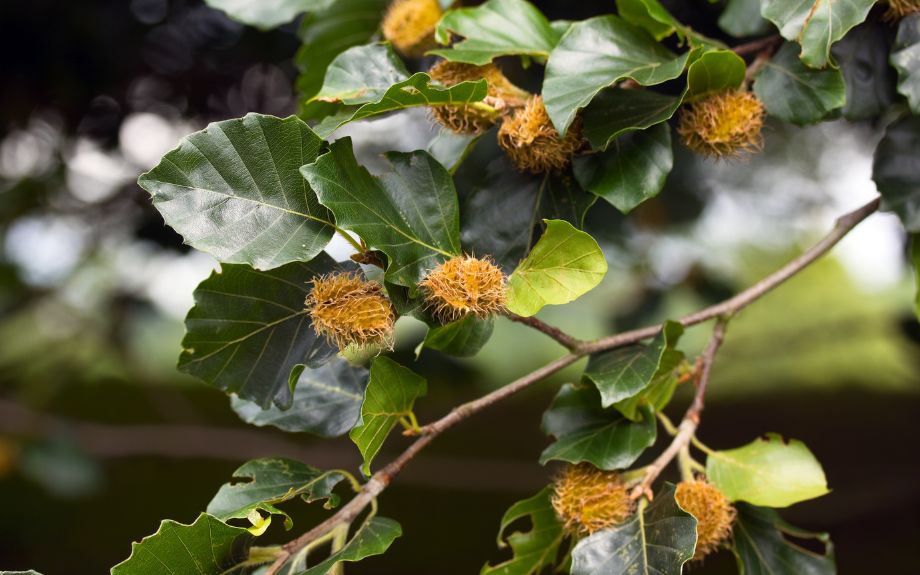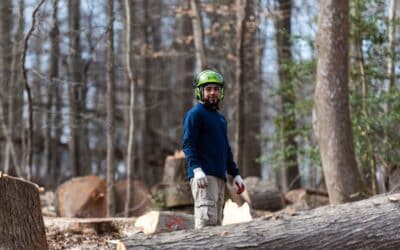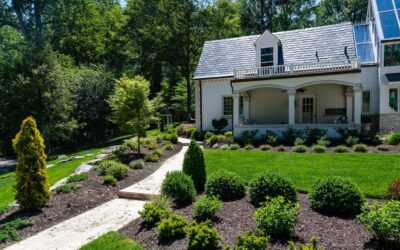Blog Topics
Does your beech tree have dark lines on its leaves? It may be suffering from beech leaf disease, a tree issue recently discovered in the eastern United States.
Due to it being a new disease, first discovered in the U.S. in 2012, information about the disease and knowledge on how it spreads is limited.
In this article, however, we will share the most up-to-date news about beech leaf disease, including:
- How to recognize beech leaf disease
- What trees this disease impacts
- What to do if you spot signs of beech leaf disease on your tree
- And more
How to recognize beech leaf disease
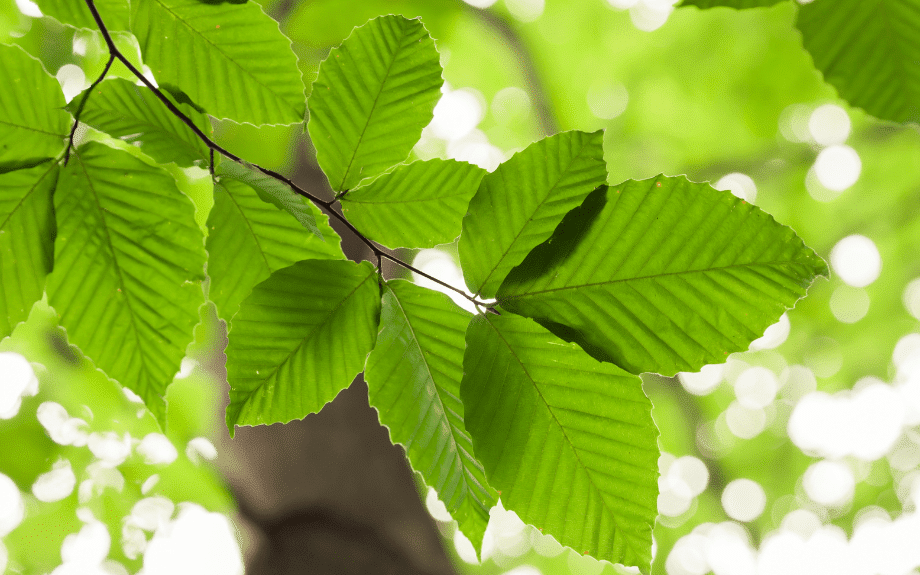
Determine if your tree is a beech tree
Beech leaf disease currently only affects beech trees, but it impacts all varieties: American beech (Fagus grandifolia), European beech (Fagus sylvatica), and Oriental beech (Fagus orientalis).
There are many American beech trees found in our area. In fact, the three most common trees found in Fairfax County, Virginia, as of 2010 are red maples, American beech trees, and tulip trees!
The most common tree species in the National Capital Area parks is also the American beech tree.
Beech trees can be recognized by:
Type
Beech trees are deciduous (they lose their leaves in fall and grow them in the spring). They are popular as shade trees or ornamental trees.
Size
Beech trees are tall (they can grow up to 40 to 60 feet), with a dense, rounded crown of leaves.
Bark
Beech tree bark is smooth and light gray. As the tree matures, the bark can become more rugged, depending on the type. Ridges that look like shallow horizontal cracks can develop on the trunk over time.
Leaves
Young beech leaves are light or lime green that turn a glossy dark green in summer. In fall, the leaves turn orange, yellow, or brown. The leaf shape is described as ovate to elliptical with a pointed tip, and they can be 2 to 6 inches long and up to 4 inches wide.
Beach leaf veins are parallel, and the edges of the leaves are ridged or toothed.
Beech trees tend to have a lot of leaves, which is why they make such great shade trees.
Flowers and Fruit
Beech trees have spring flowers that appear after the new leaves grow in spring, they are yellowish-green catkins.
Beech tree fruit, or beechnuts, are brown, triangular, and contained in husks that have a spiky appearance.
View images and read the descriptions of various beech trees here
How to Check for signs of beech leaf disease
While some aspects of this tree disease may look similar to other issues, there are distinct symptoms of beech leaf disease that you can look for.
Dark stripes
Beech leaf disease is most easily identified by dark green stripes on the underside of beech leaves. These bands on the leaves are most easily viewed by looking up into the tree’s canopy.
Thickening leaves
The leaves with dark stripes tend to become thicker, with a leather-like consistency.
Curling leaves
Beech tree leaves may also begin to curl as they are impacted by beech leaf disease.
Reduced leaf size
As the disease progresses, any new leaves that grow may be significantly smaller than the previous leaves.
Canopy thinning
The striped, curling leaves will eventually drop, and fewer new leaves will grow. The ones that do grow will be smaller. All of these things lead to the entire tree canopy appearing thinner and less dense.
Tree death
Young trees may succumb to beech leaf disease within two to five years of becoming infected. Larger trees may last up to six years.
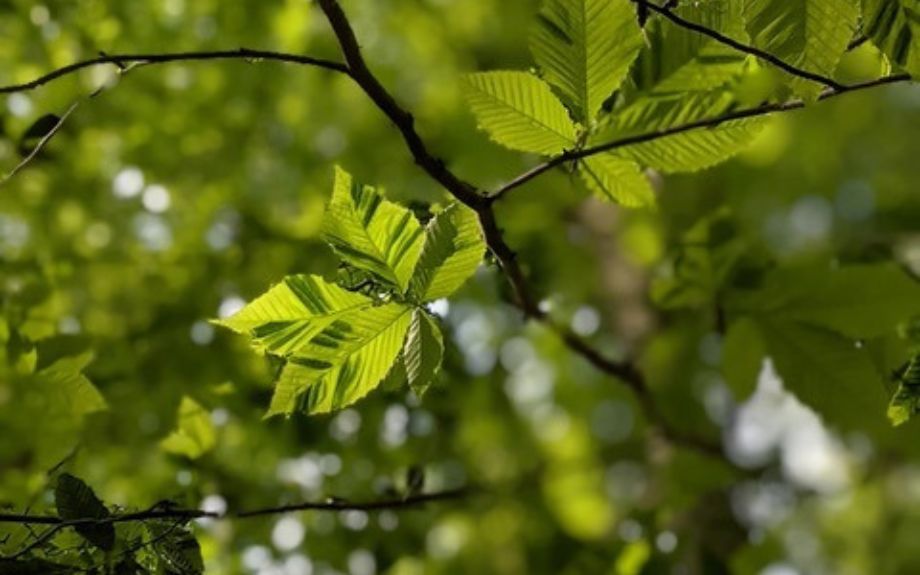
Dark stripes on beech leaves are a sign of beech leaf disease. Image courtesy of Dr. Robert E. Marra, Connecticut Agricultural Experiment Station.
Where has beech leaf disease been spotted?
Beech leaf disease was first discovered in North America in Ohio in 2012. Since then, it has spread to other states, including Virginia and Maryland, and up into Canada. The disease is thought to be caused by a nematode (a type of worm), since the nematode was found on every infected tree. A similar (but not identical) nematode that causes a similar disease was found in Japan in the early 2000s.
What should I do if I spot signs of beech leaf disease on my trees?
As of the writing of this article, there is no official treatment for beech leaf disease, though different treatment methods are being tested. The tree care professionals at Riverbend Landscapes & Tree Service are monitoring the news about this and other tree issues, and there may be a treatment available by the time you notice any signs of beech leaf disease on your tree.
Call us to schedule an inspection and to learn the latest updates on beech leaf disease in Virginia, Maryland, and the Washington, D.C. area.
Until there is a proven treatment for beech leaf disease, you can focus on prevention.
How can I prevent beech leaf disease?
Keep your trees healthy
Pests and diseases are more likely to attack trees that are already stressed. Proper maintenance, watering, and pruning can all work to keep your trees healthy. Adding organic mulch around your tree can also protect it and add nutrients to the soil, as long as the mulch is applied correctly.
Prevent contamination from beech saplings or firewood
Beech leaf disease has not yet reached all areas, so keeping diseased beech trees, as well as leaves, firewood, and other parts of the trees, away from healthy beech trees can prevent new trees from becoming infected.
Some nurseries in areas where beech leaf has been spotted are voluntarily stopping sales on beech tree seedlings, but if you buy one from any location, check for any signs of disease before transporting it, as it can pass on the disease to other beech trees.
Keep an eye on your beech trees’ health
Periodically check over your beech trees for any symptoms of beech leaf disease. Fertilization may benefit any trees that need a little extra TLC.
Beech trees can suffer from other issues, such as beech bark disease, so treating any current pest or disease on your trees is important.
Contact Riverbend Landscapes & Tree Services
With the many tree pests and diseases prevalent in our area, it can be hard to tell what issue(s) may be plaguing your trees.
That’s why we offer professional diagnoses through our consultations and tree health management services.
Trees are a valuable resource, and we want to help you keep your trees healthy and strong!
Contact us today to request your professional tree evaluation.
Give Us a Call at 703-402-9366
If you'd like help with your trees or landscape, have any questions, or would like to schedule an appointment with one of our Certified Arborists, please give us a call. We'd love to hear from you!

